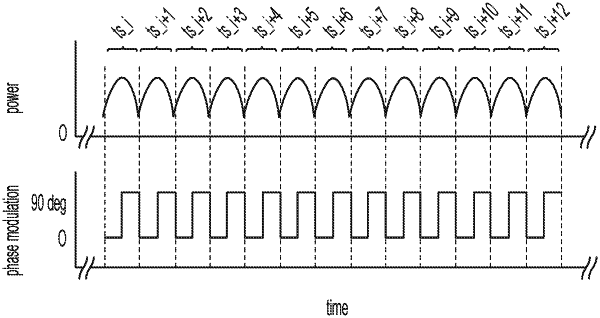| CPC G01B 9/0201 (2013.01) [G01B 9/02008 (2013.01); G01B 9/02091 (2013.01); G06T 7/0012 (2013.01); G06T 2207/10101 (2013.01); G06T 2207/30004 (2013.01)] | 38 Claims |

|
1. A method, comprising:
scanning a sample over a period of time using an electro-magnetic radiation source, the period of time including a first time period and a second time period, scanning the sample comprising:
emitting from the electro-magnetic radiation source a plurality of electro-magnetic radiation pulses each divided into two time periods corresponding to the first time period and the second time period,
directing a sample portion of the plurality of electro-magnetic radiation pulses from the electro-magnetic radiation source to the sample in a sample arm of an optical interferometric system, and
directing a reference portion of the plurality of electro-magnetic radiation pulses from the electro-magnetic radiation source to a reference arm of the optical interferometric system;
applying, using a phase modulator, a phase shift comprising a first phase shift and a second phase shift to at least one of the reference portion or the sample portion of the electro- magnetic radiation source,
the first phase shift being applied during the first time period and the second phase shift being applied during the second time period,
the second phase shift having a difference of 90 degrees from the first phase shift;
acquiring in-phase data based on a first interference between first backscattered electro-magnetic radiation during the first time period and the at least one of the reference portion or the sample portion subjected to the first phase shift;
acquiring quadrature data based on a second interference between second backscattered electro-magnetic radiation during the second time period and the at least one of the reference portion or the sample portion subjected to the second phase shift; and
determining a complex interference signal based on the in-phase data and the quadrature data.
|